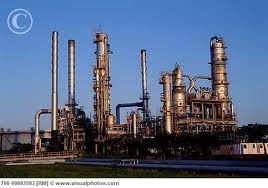Tue 18 Oct 2011
Las mulas de las drogas, or as it is known in English, the drug mules.
These mules, who are mainly women, center on the same concept: trafficking
drugs into another country for profit. But are most of these women really
victims? Though some have not known they are carrying drugs in purses or belts,
it seems ridiculous for others to not know that something is amiss. For women
trapped in the confines of poverty, becoming a mula seems like an easy way to
make some extra money. However, it would be insane to think that these women
are unaware of the dangers that are bestowed upon them once they begin their
journey. And their journey begins as soon as they swallow or insert their first
capsule or latex protected drugs.
In Spanish mula means mule. In many people’s minds, mules are lowly
animals used to work the land or for other such purposes. Thus the name alone introduces
these women as lowly creatures, bottom of the drug trafficking totem pole. Many
of these women are single parents, struggling within their impoverished lives
to make ends meet for the benefit of their children. So one could see why a
quick sum of money from a drug lord could entice these women to participate in
the dangerous scheme of transporting drugs. There are many ways mulas can transport drugs,
such as cocaine, heroin, or marijuana, across international borders. Some may
carry the drugs in a purse, belt, or suitcase without ever knowing what they
are carrying. However, other mulas swallow pellets of drugs, or pepas/pepitas,
or they may insert the drugs vaginally or anally. One mula was found with 114 capsules in her stomach. In this case, the women
are well aware of their task at hand and of the dangers that could befall them.
If any of the pepas were to rupture within them, it would be instant overdose
thus instant death.
One woman, who remains anonymous, practiced
her swallowing by “training with some carrots and grapes.” She then came to her
conclusion that “if you pass this [carrots and grapes], then you can pass this
[las drogas].” She became a mula in order to make a better life for her
children; however, was discovered by the authorities and sentenced to 8 years
in London, England. This mula is an example of the typical poor, single mother
who becomes the victim of an unfortunate circumstance. However, should she be
penned as much as a victim as she is portrayed as? She was well aware of the
drugs she was trafficking overseas.
Three other women were discovered as
mulas when a Houston customs agent “noticed that the women appeared overly voluptuous,
particularly in the bust, thighs and bottom… under layers of fashionable
clothing — each wore five to seven pounds of cocaine bricks.” These women were
clearly aware of the drugs they were carrying underneath their clothing, hidden
within the air of professionalism. These are the mulas who are obvious
criminals.
Mulas and drug trafficking within itself is an unfortunate danger for many within
Latin America. And the use of women as mulas is a terrible way of life. Trapped
in poverty with no future for them or their children, easy and fast money from
the people within the drug trafficking system is an easy way out. Some women
have no choice but to become mulas while others make the decision themselves to
traffic drugs. The first section of mulas is considered victims of their
situation, but are they truly victims entirely? I began my research in this
subject to find evidence to prove the majority of them are not victims; however,
with the information I found, I could not help but feel that they sadly are
victimized. The concept of being a victim can be left to each individual’s
opinion, and that I leave to you.














